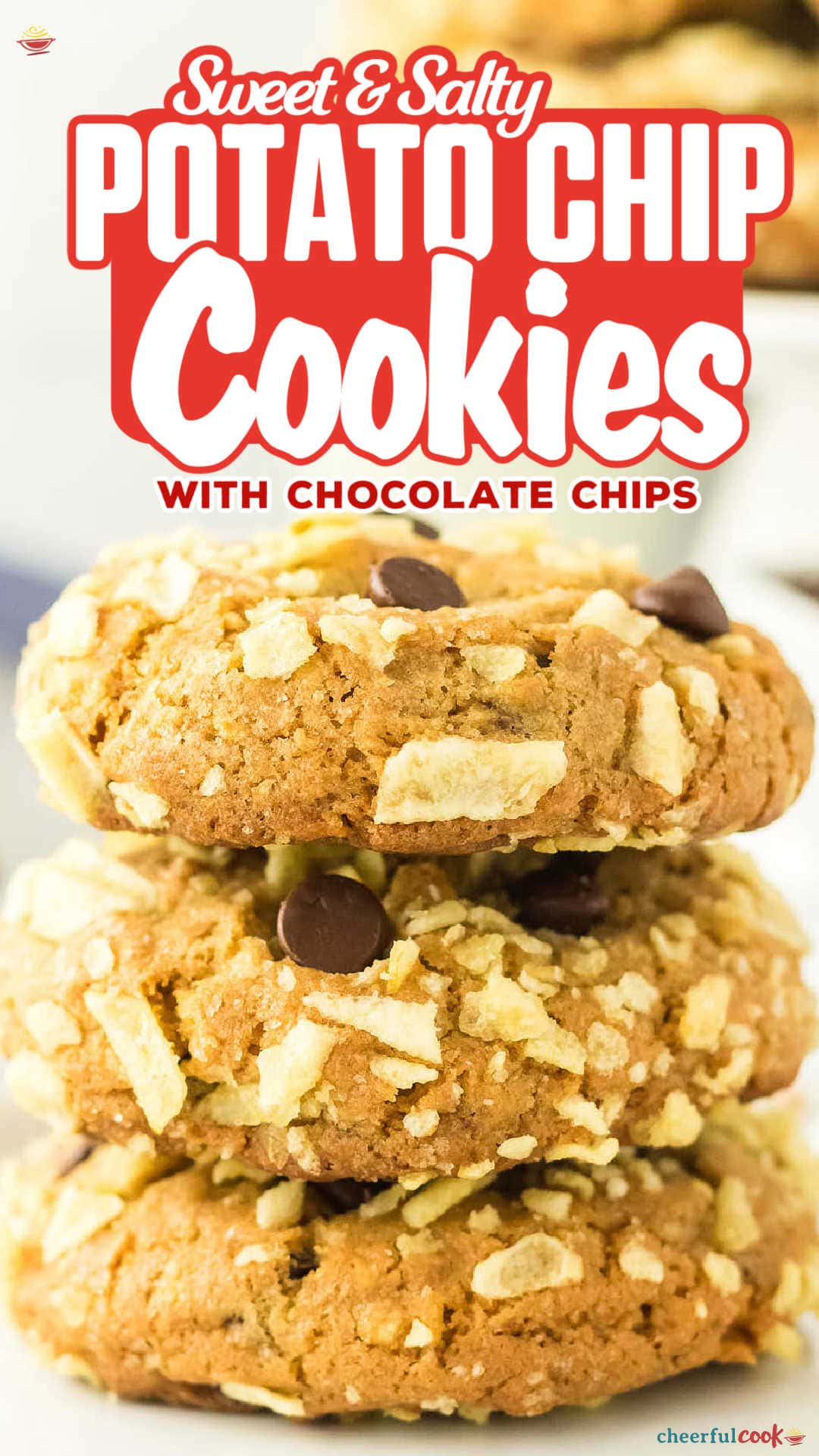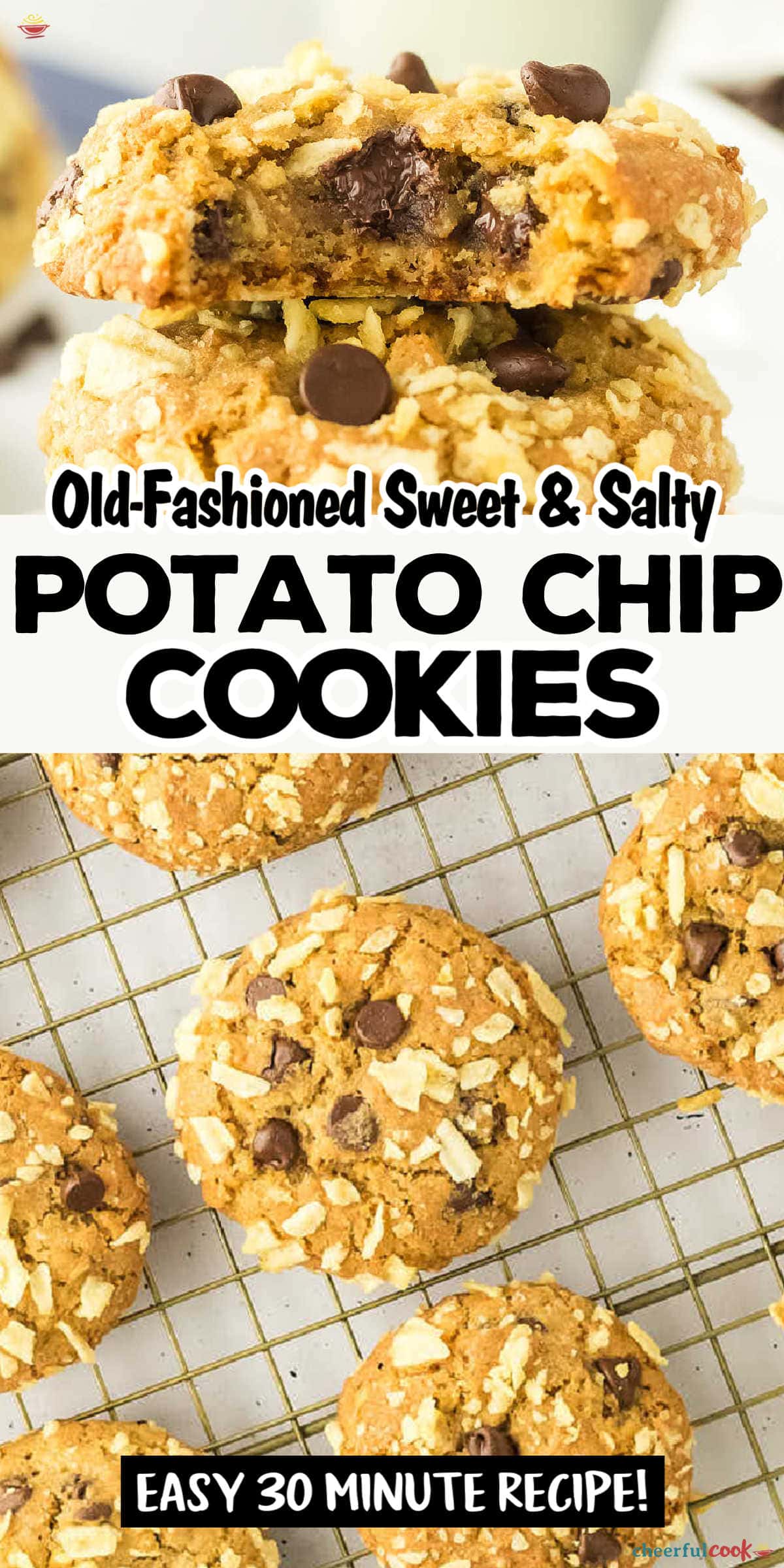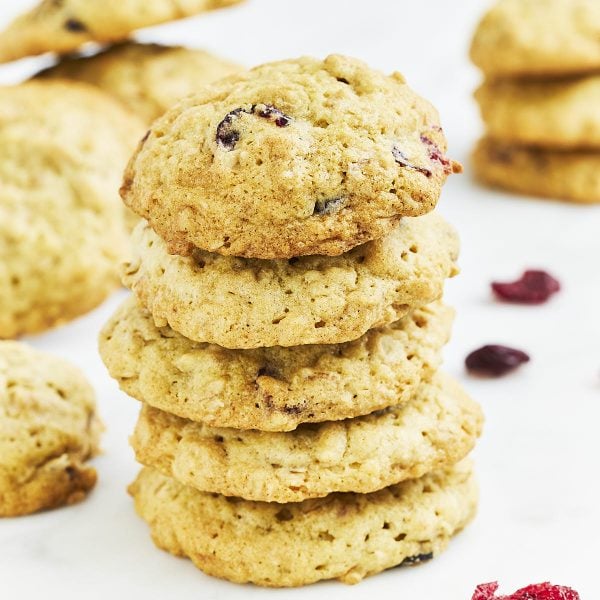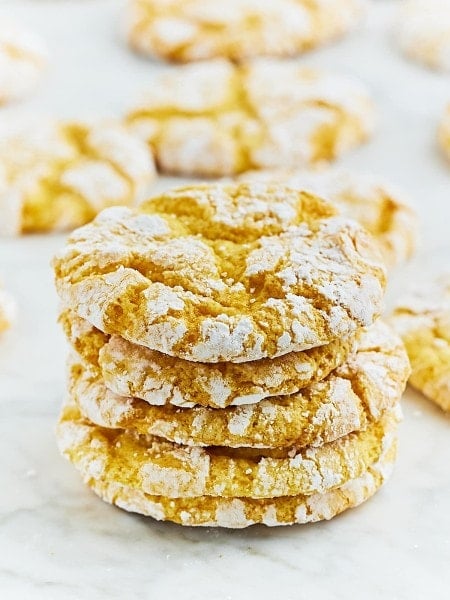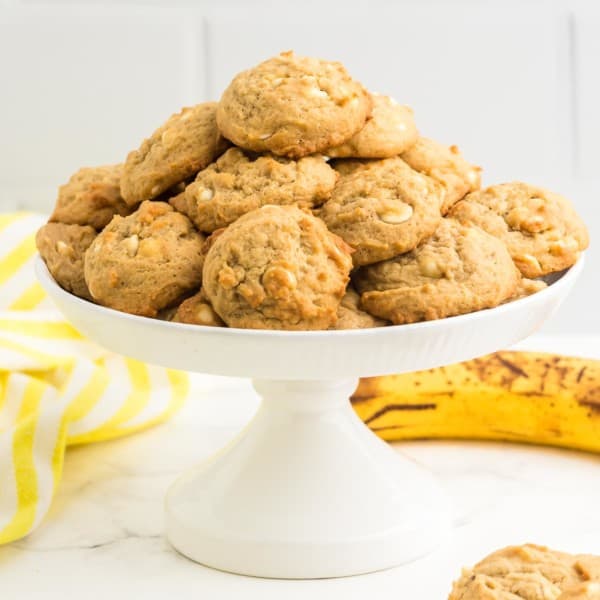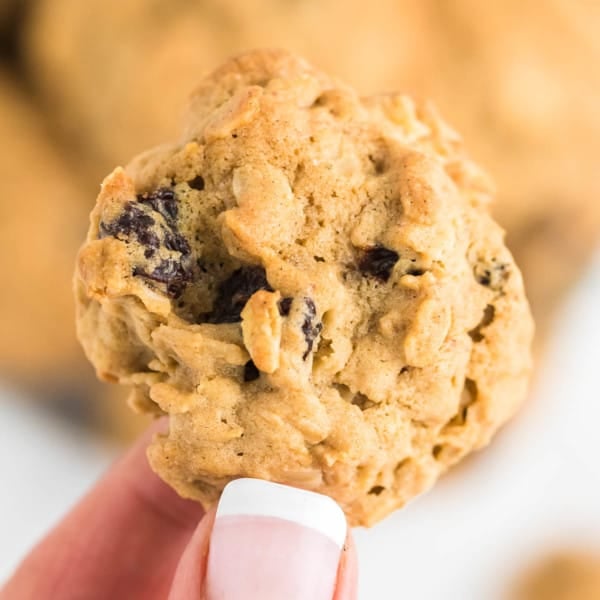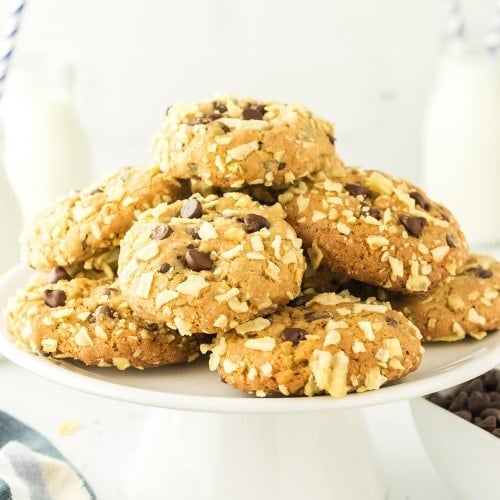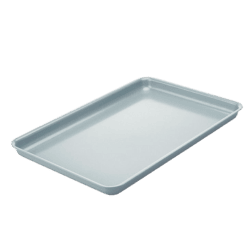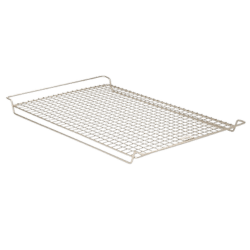Potato Chip Cookies
Potato Chip Cookies are sweet chocolate chip cookies loaded with salty, crunchy potato chips. They’re soft, buttery, and just the right amount of unexpected.
Brown sugar and butter create a deep caramel flavor that makes these cookies taste more complex than they actually are to make.
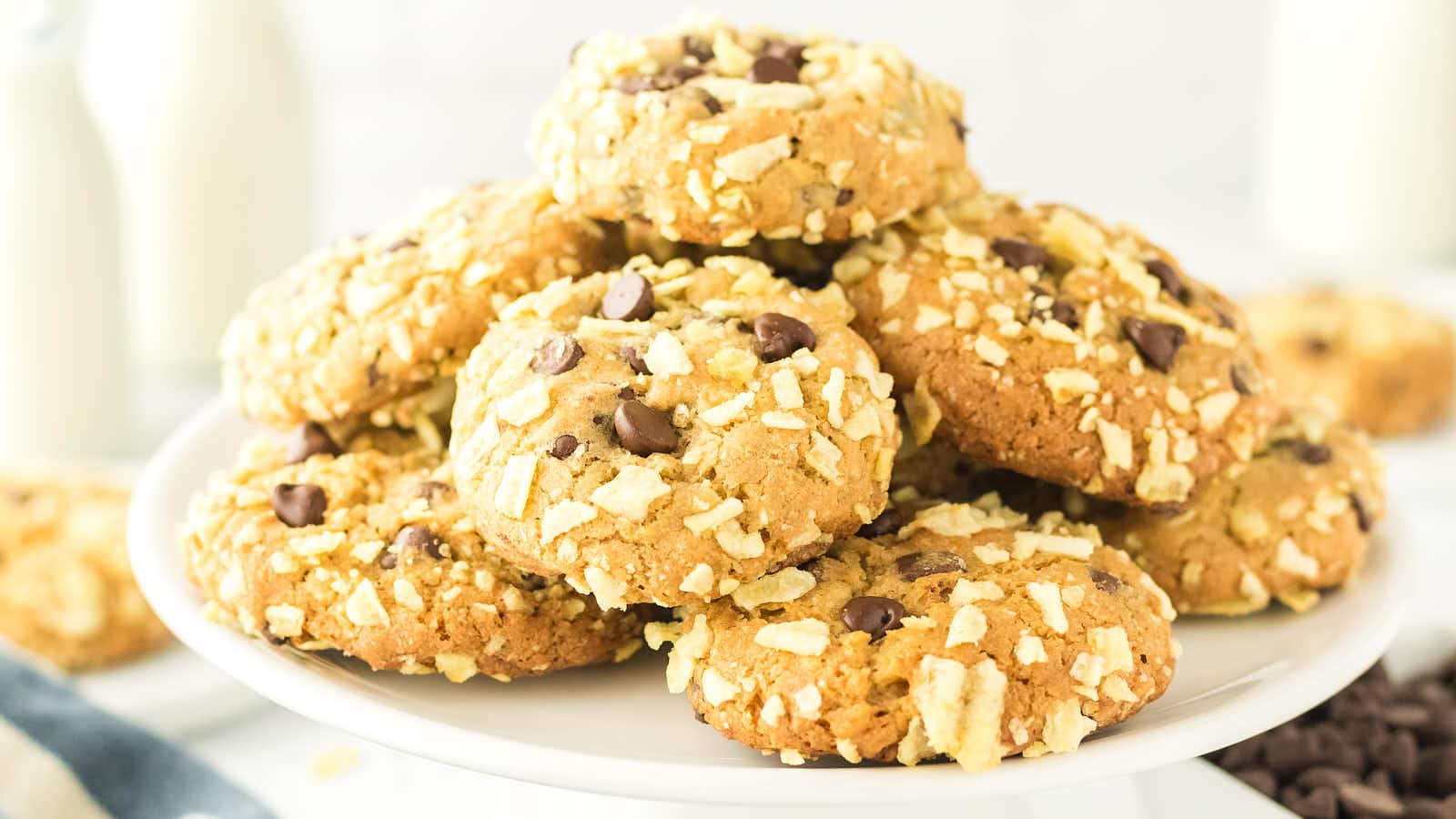
My bestie calls these “the cookies that shouldn’t work but totally do” because the combination sounds weird until you taste one. Then you understand why I keep a bag of ruffled chips in the pantry at all times. These disappear faster than regular chocolate chip cookies every single time I make them.
Potato Chip Cookies Recipe Highlights
- Ready in under an hour, including chill time
- Fun recipe for cookie exchanges
- Soft cookie with surprising salty-sweet crunch
- Perfect for cookie swaps and parties
- Doubles easily for crowds or bake sales
Ingredient Notes
Please check the recipe card below for a detailed, printable ingredient list.
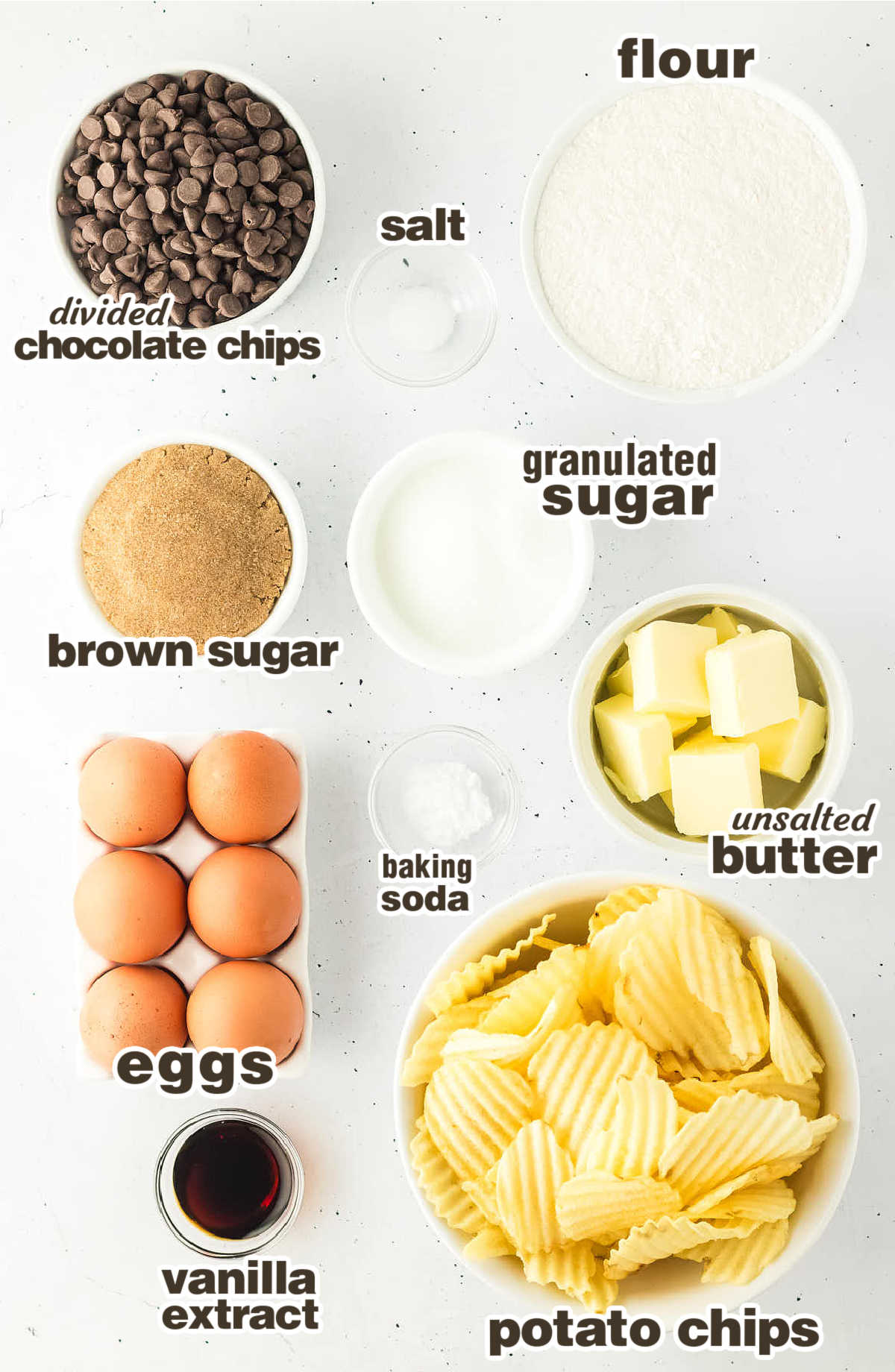
FLOUR – All purpose flour provides structure without making these cookies tough or dry. The moderate protein content works perfectly with the butter and sugar to create a tender crumb that holds together around the potato chip pieces. Measure by spooning flour into your measuring cup and leveling it off rather than scooping directly from the bag, which packs the flour and can make cookies dense.
BUTTER – Unsalted butter gives you control over the salt level since the potato chips add plenty of sodium. Room temperature butter (soft enough to leave a fingerprint but not greasy) creams properly with the sugars to incorporate air, which makes cookies lighter. Cold butter won’t mix well and melted butter changes the texture completely, so plan ahead and leave butter on the counter for about an hour before you start.
SUGARS – Brown sugar contains molasses, which adds moisture and a caramel flavor that complements the salty chips beautifully. Granulated sugar helps cookies spread and creates crisp edges while keeping the centers soft. The combination of both sugars gives you better texture and more interesting flavor than using just one type. Pack brown sugar firmly into the measuring cup so you get the right amount.
POTATO CHIPS – Ruffled chips work best because they’re thicker and sturdier than regular chips, so they maintain some crunch even after baking. Plain salted chips are essential. Flavored chips like sour cream and onion or barbecue will make these cookies taste terrible. You need about 7 ounces, which is one standard bag. Crush them by hand in the bag or use a food processor, but don’t pulverize them into dust. You want a mix of small pieces and fine crumbs for the best texture contrast.
CHOCOLATE CHIPS – Semi sweet chocolate chips balance the salty potato chips without making the cookies too sweet. The chocolate melts slightly during baking to create pockets of richness throughout each cookie. Reserving some chips to press into the tops makes the cookies look bakery quality, but you can skip this step and just mix all the chips into the dough if you prefer. Dark chocolate chips work well if you want a more sophisticated flavor, and milk chocolate makes them sweeter and more kid friendly.
VANILLA EXTRACT – Pure vanilla extract enhances all the other flavors without making the cookies taste specifically like vanilla. One tablespoon is more than typical cookie recipes call for, but it’s intentional here to create depth that stands up to the bold salty sweet combination.
How To Make Potato Chip Cookies
Please check the printable recipe card below for more detailed instructions.
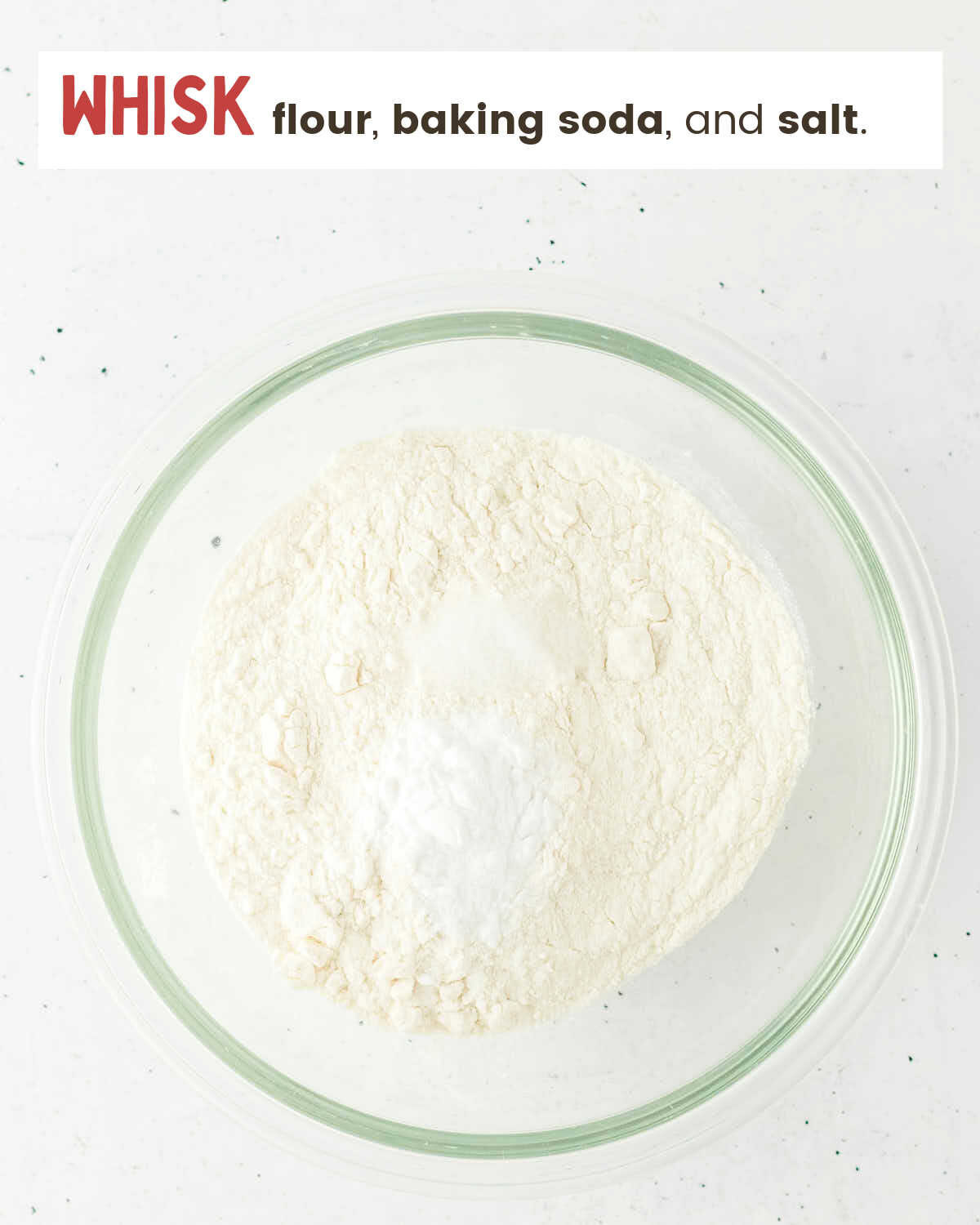
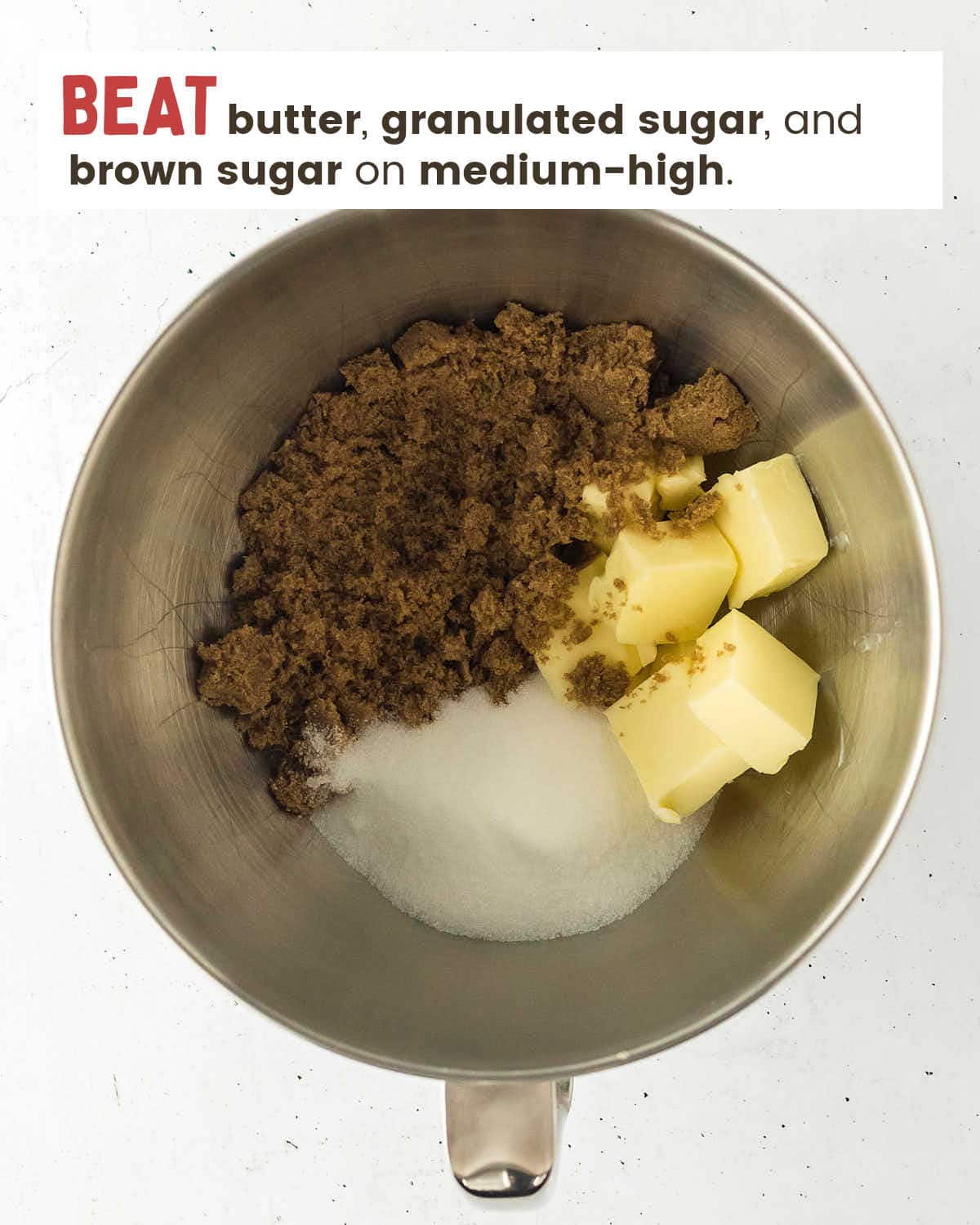
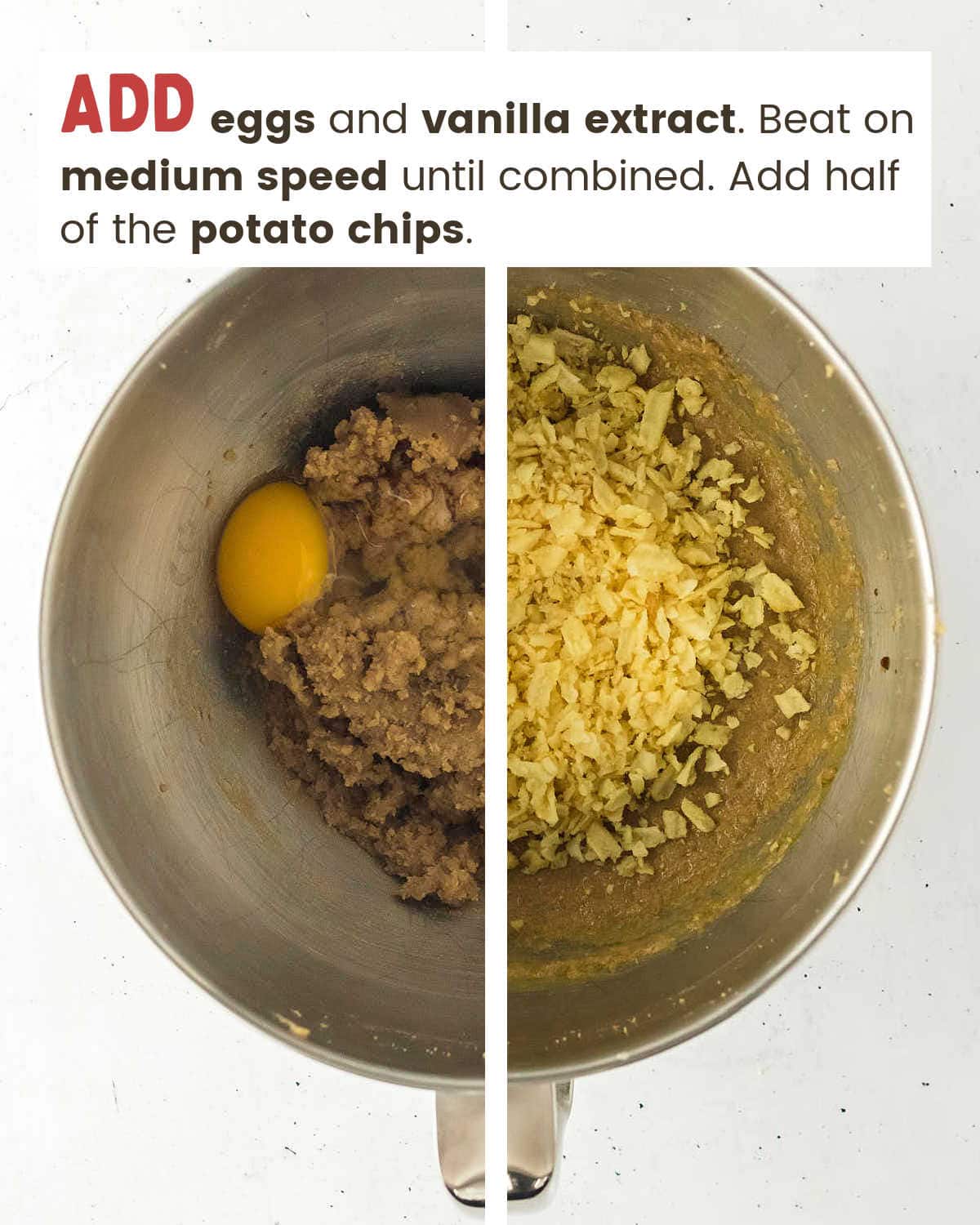
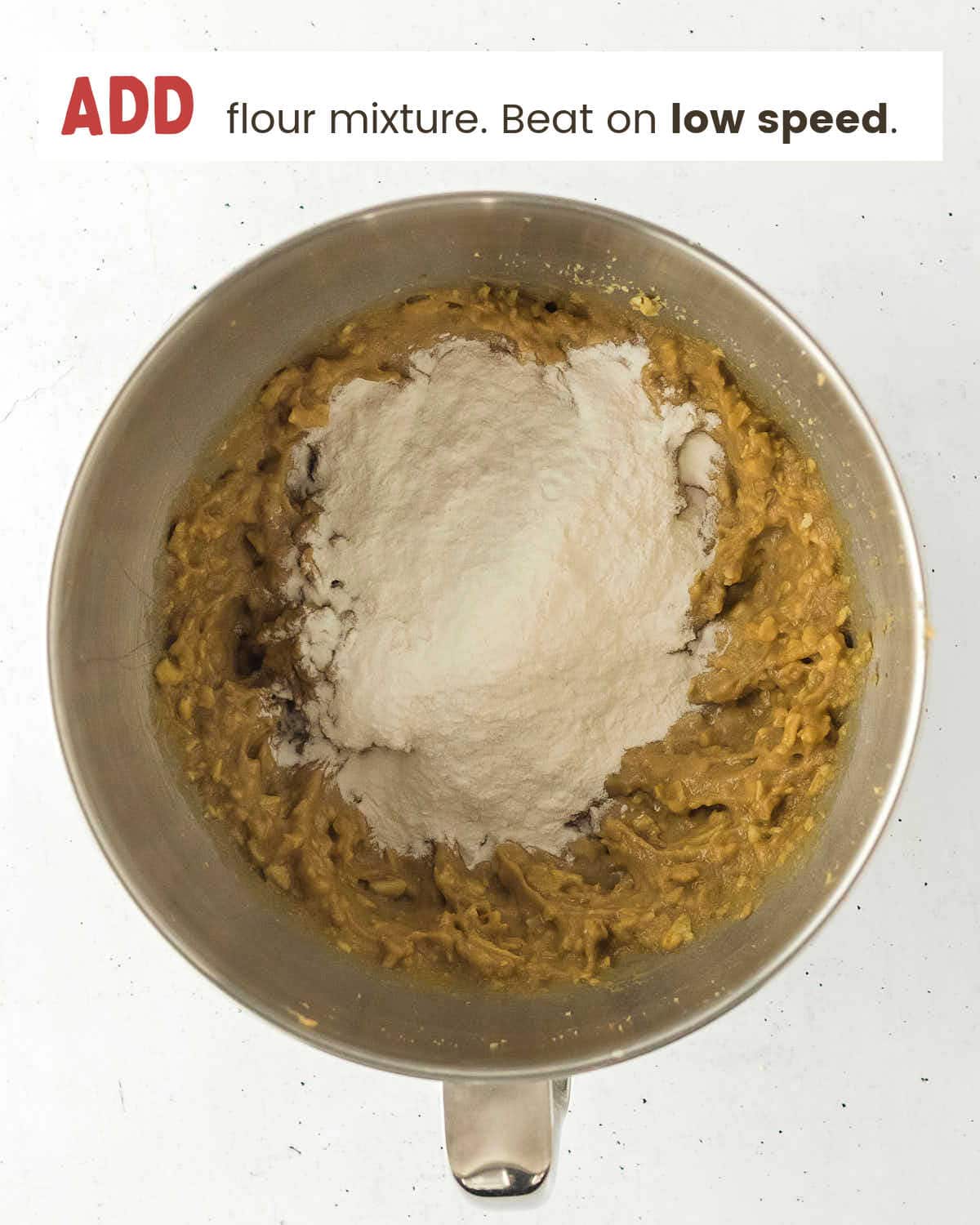
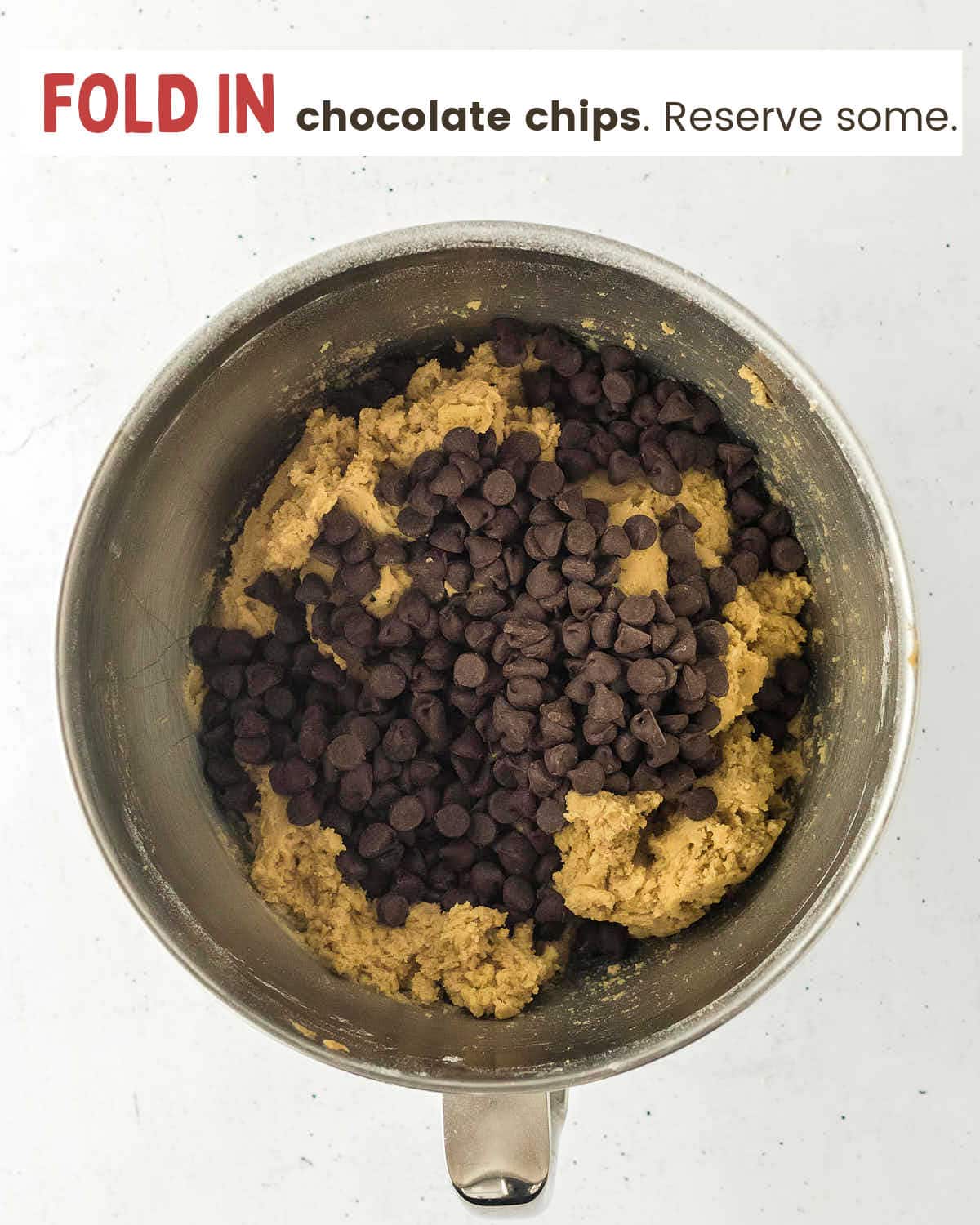
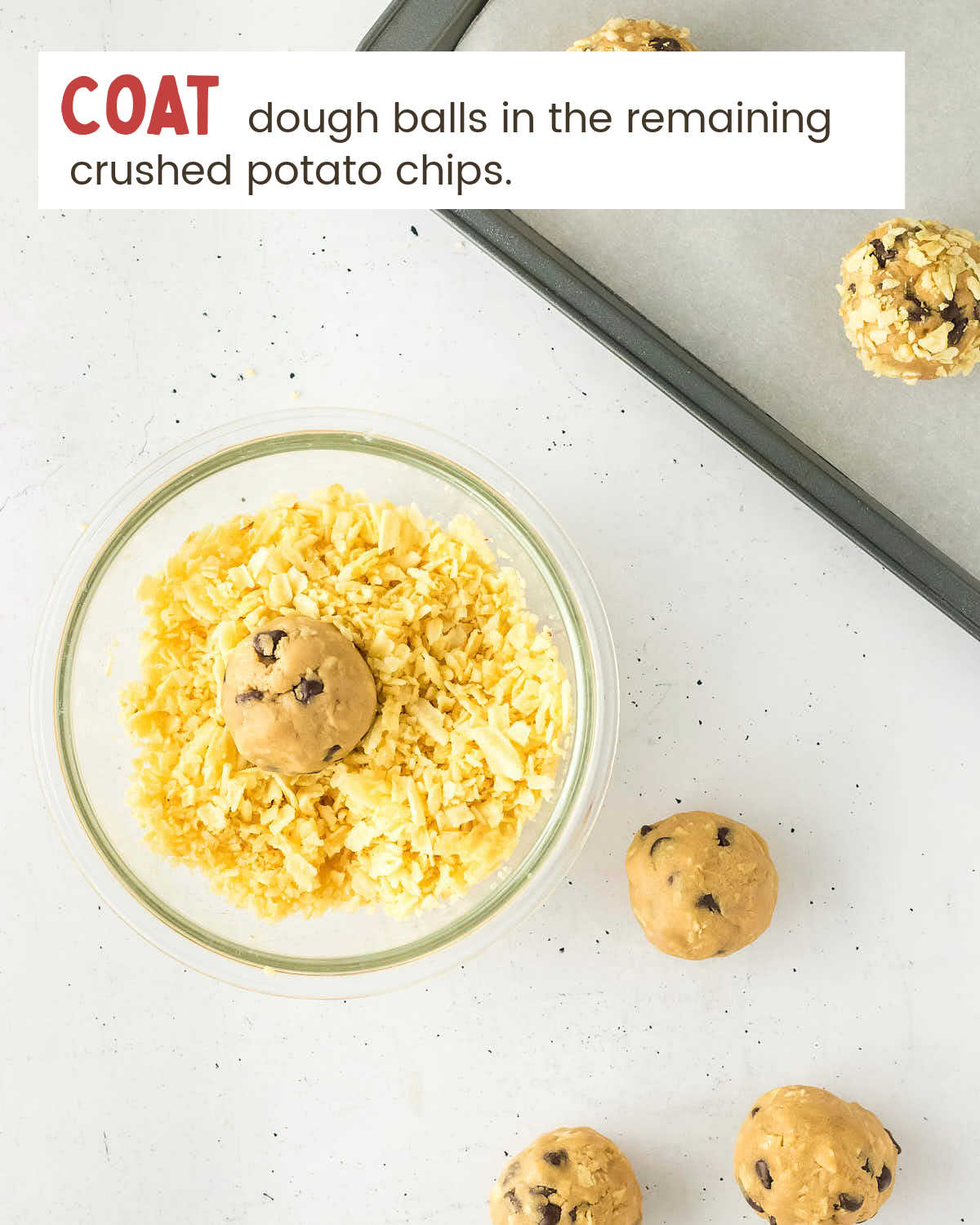
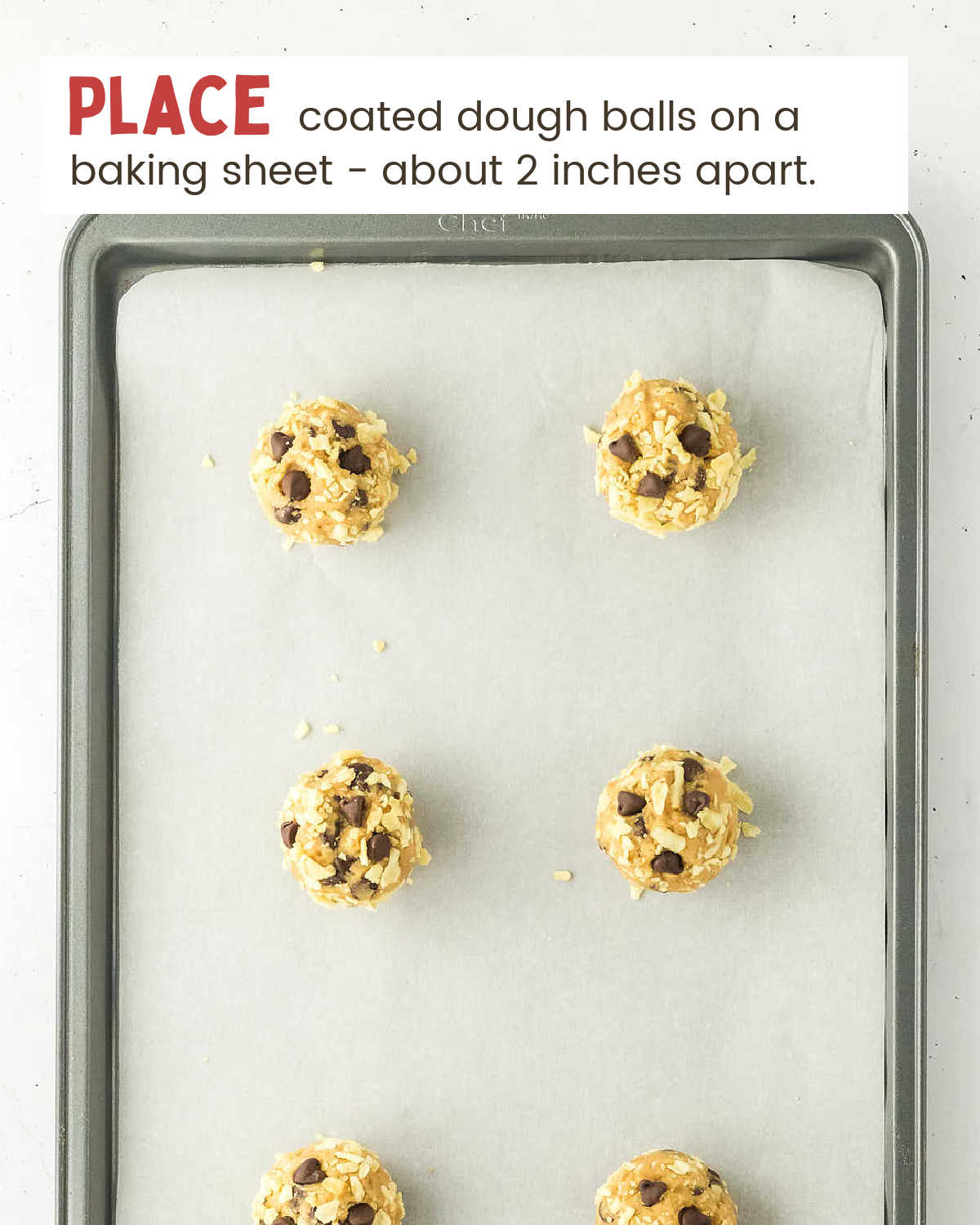
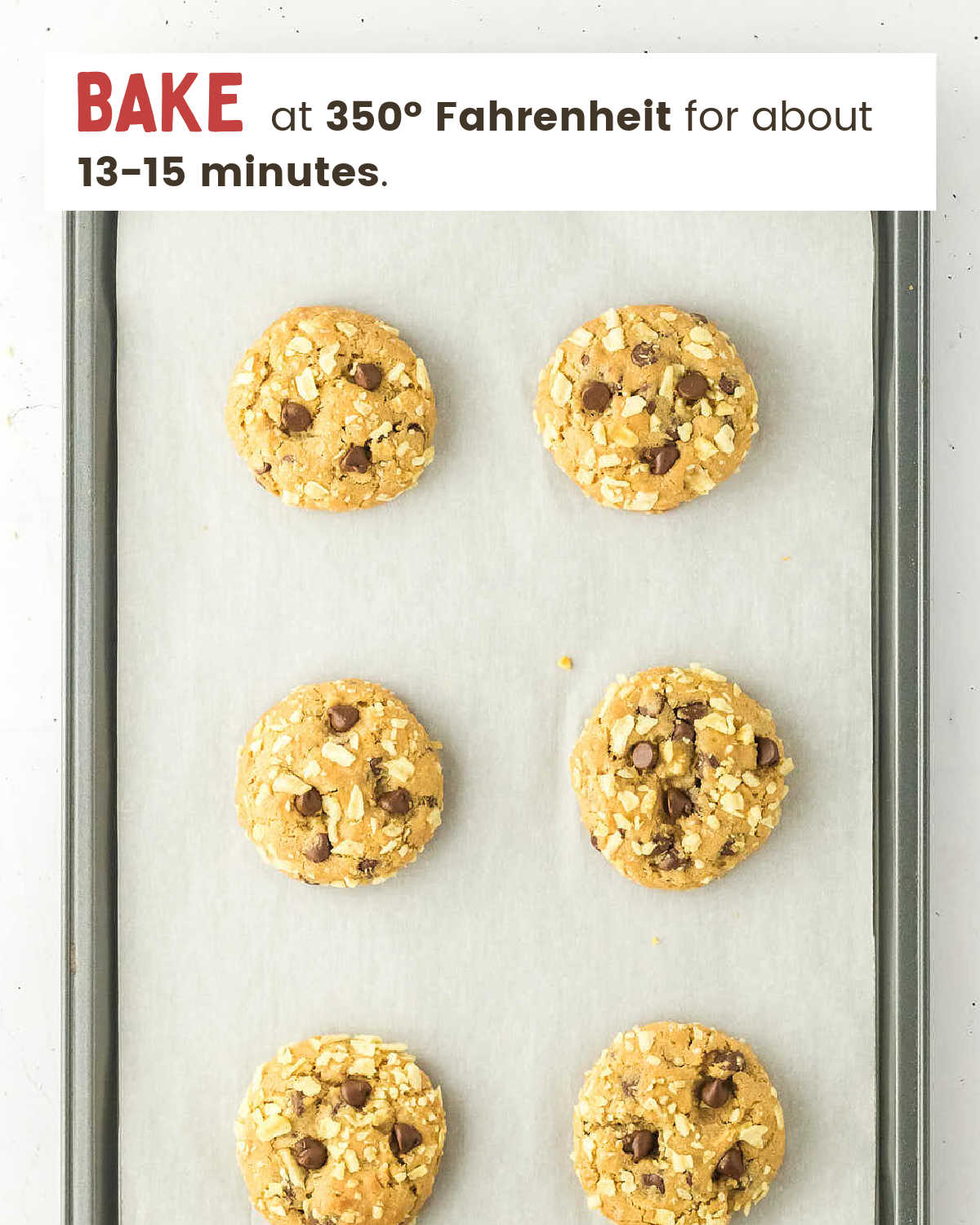
- Whisk flour, baking soda, and salt.
- Beat butter and both sugars until fluffy. Mix in eggs and vanilla. Add half the crushed chips.
- Mix in flour mixture into the batter. Fold in most of the chocolate chips.
- Chill dough for 1 hour. Crush remaining potato chips.
- Roll dough into balls and coat in crushed potato chips.
- Press reserved chocolate chips on top.
- Bake for 13-15 minutes at 350º Fahrenheit.
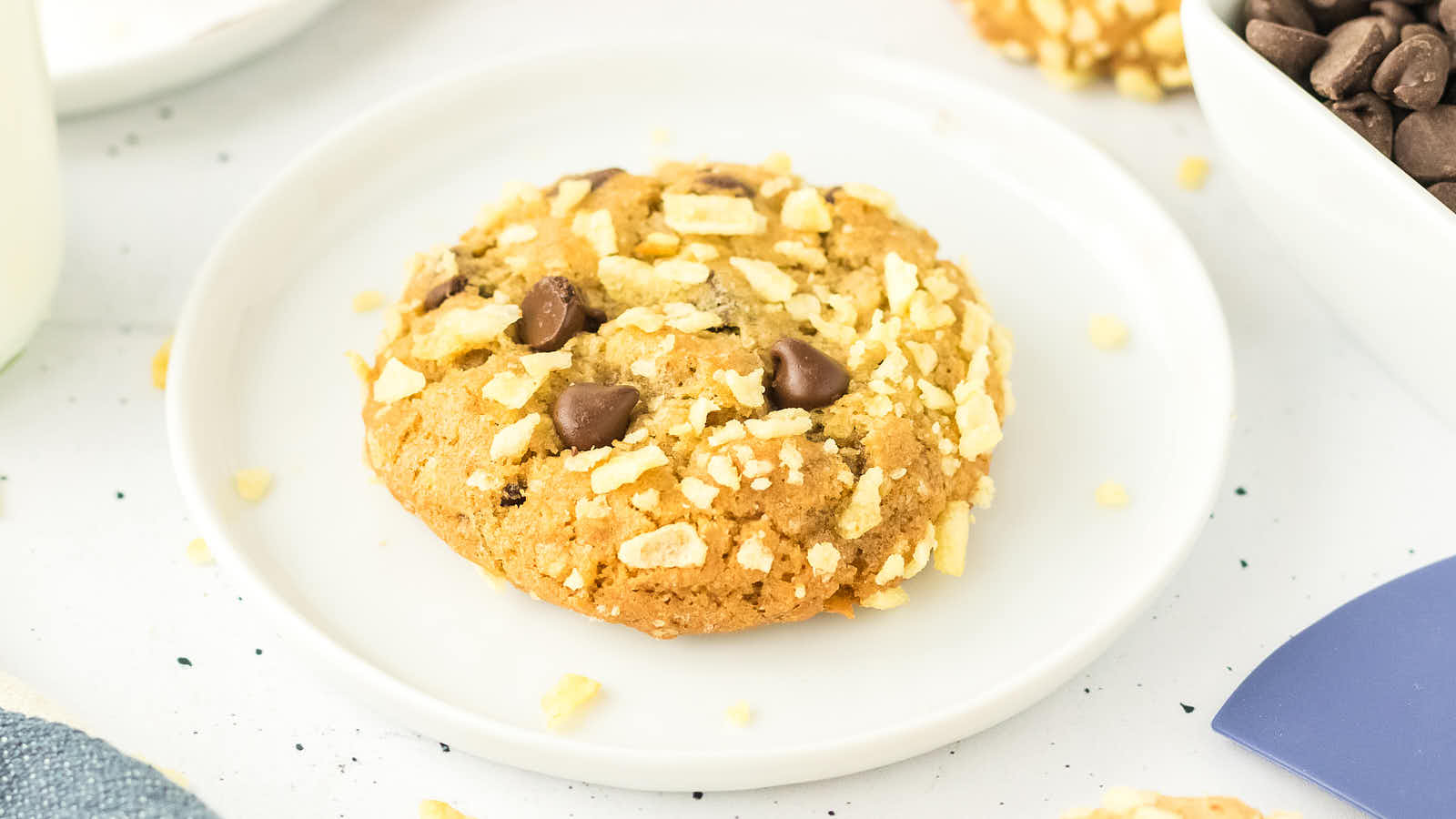
Leftovers and Storage
STORE – Keep your Potato Chip Cookies in an airtight container at room temperature for up to 5 days. The potato chips will gradually lose some crunch over time, but the cookies still taste great. Don’t refrigerate them because the cold temperature makes the texture dense and the butter flavor less pronounced.
FREEZE – Freeze baked cookies in an airtight container or freezer bag for up to 3 months. Place parchment paper between layers to prevent sticking. Thaw at room temperature for about 30 minutes before eating. You can also freeze unbaked dough balls on a baking sheet until solid, then transfer to a freezer bag and bake straight from frozen, adding 2 minutes to the baking time.
MAKE AHEAD – Prepare the dough through step 6, then refrigerate for up to 3 days before baking. The longer chill time actually improves flavor as the ingredients meld together. You can also shape the dough into balls, coat them in crushed chips, and refrigerate on the baking sheet covered with plastic wrap for up to 24 hours before baking.
More Cookie Recipes
Serving Suggestions
DESSERT PLATTER – Add these to a cookie assortment alongside Brown Butter Chocolate Chip Cookies and Peanut Butter Cookies for variety. The unexpected salty element makes them a conversation starter.
AFTERNOON SNACK – Serve Potato Chip Cookies with cold milk or hot coffee for a satisfying break that hits both sweet and salty cravings. The chocolate and caramel notes pair especially well with dark roast coffee.
COOKIE EXCHANGE – Bring Potato Chip Cookies to your next cookie swap because they’re different enough to stand out but familiar enough that everyone loves them. They always disappear first at holiday parties.
GAME DAY TREAT – Pack these for tailgating or watching sports at home. They’re sturdy enough to travel well and the potato chip element fits the casual snacking mood perfectly.
ICE CREAM SANDWICH – Press vanilla or salted caramel ice cream between two cookies for an elevated dessert. The temperature contrast and creamy texture work beautifully with the crunchy chips.
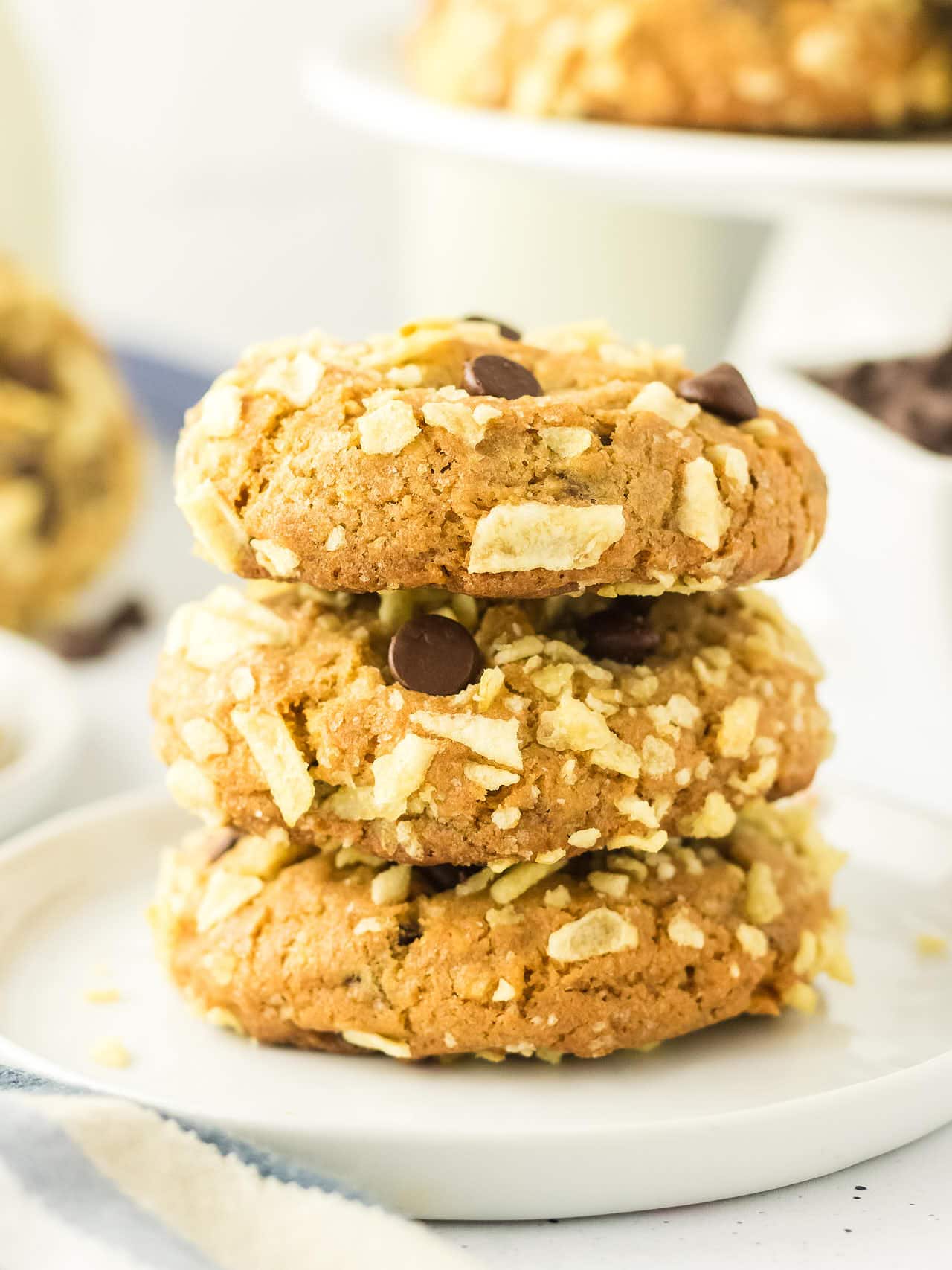
Recipe Success Tips
CRUSHING THE CHIPS – Leave the chips in the bag, press out the air, seal it, and crush them with a rolling pin or the bottom of a heavy pan. You want a mix of textures with some pieces about the size of a pea and the rest crushed into coarse crumbs. If you crush everything into powder, you lose the textural contrast that makes these cookies special.
DOUGH TEMPERATURE – The one hour chill time isn’t optional because cold dough spreads less in the oven, which gives you thicker cookies with better texture. Warm dough spreads too thin and the cookies end up flat and greasy. If your kitchen is very warm, chill the dough for up to 2 hours to ensure the butter is properly firm.
COATING CONSISTENCY – Roll each dough ball in the finely crushed chips immediately before placing on the baking sheet. If you coat all the balls at once, the chips can get soggy from moisture in the dough. The coating should cover the outside completely for maximum crunch and visual appeal.
BAKING TIMING – Remove cookies from the oven when the edges are set and lightly golden but the centers still look slightly underdone (13-15 minutes). They continue baking on the hot pan during the 5 minute cooling period. Overbaking makes the chips lose their crunch and the cookies become dry instead of tender.
EXPERT TIP – Use a cookie scoop for uniform size so all cookies bake evenly. A tablespoon scoop (about 1.5 inches) makes cookies that are substantial but not huge. If you make them different sizes, smaller cookies will burn before larger ones are done.
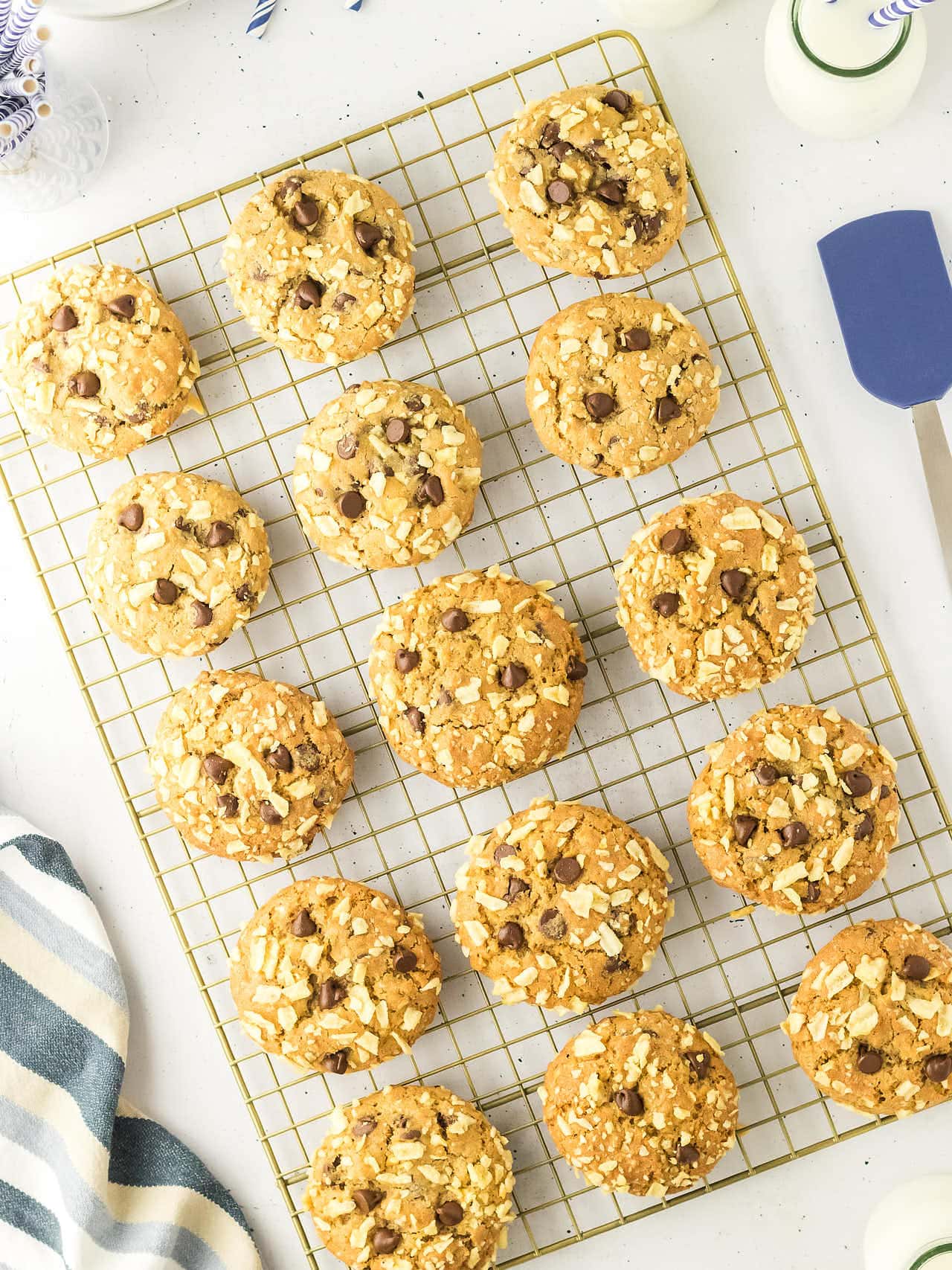
Commonly Asked Questions
Can I use regular potato chips instead of ruffled chips?
Yes, but your cookies won’t have as much crunch. Regular chips are thinner and become softer during baking. Kettle cooked chips work better than standard chips if you can’t find ruffled because they’re thicker and crispier.
Why do my cookies spread too much?
Your butter was probably too warm or you didn’t chill the dough long enough. Make sure butter is just room temperature, not melted or greasy. Chill shaped dough balls for 15 minutes if your kitchen is hot. Also check that your baking soda is fresh because old leavening won’t work properly.
Can I make these without a stand mixer?
Absolutely. Use a hand mixer or even a wooden spoon and some elbow grease. The key is creaming the butter and sugars until the mixture looks lighter in color and fluffy in texture, which takes about 3 minutes with a hand mixer.
What other chips can I add instead of chocolate?
Butterscotch chips enhance the caramel flavor from the brown sugar beautifully. Peanut butter chips add nutty richness that complements the salty chips. White chocolate chips make the cookies sweeter and work well if you add chopped pecans too.
Do the potato chips stay crunchy after baking?
The chips mixed into the dough soften somewhat but still provide textural contrast. The chips coating the outside stay crunchier because they’re exposed to direct heat. You get both soft pockets and crunchy bits throughout each cookie.
Can I use flavored potato chips?
No. Stick with plain salted chips. Flavored varieties like sour cream and onion, barbecue, or cheddar taste wrong in a sweet cookie. The seasoning clashes with the chocolate and sugar in ways that don’t work.
More Recipes with Chocolate Chip Cookies
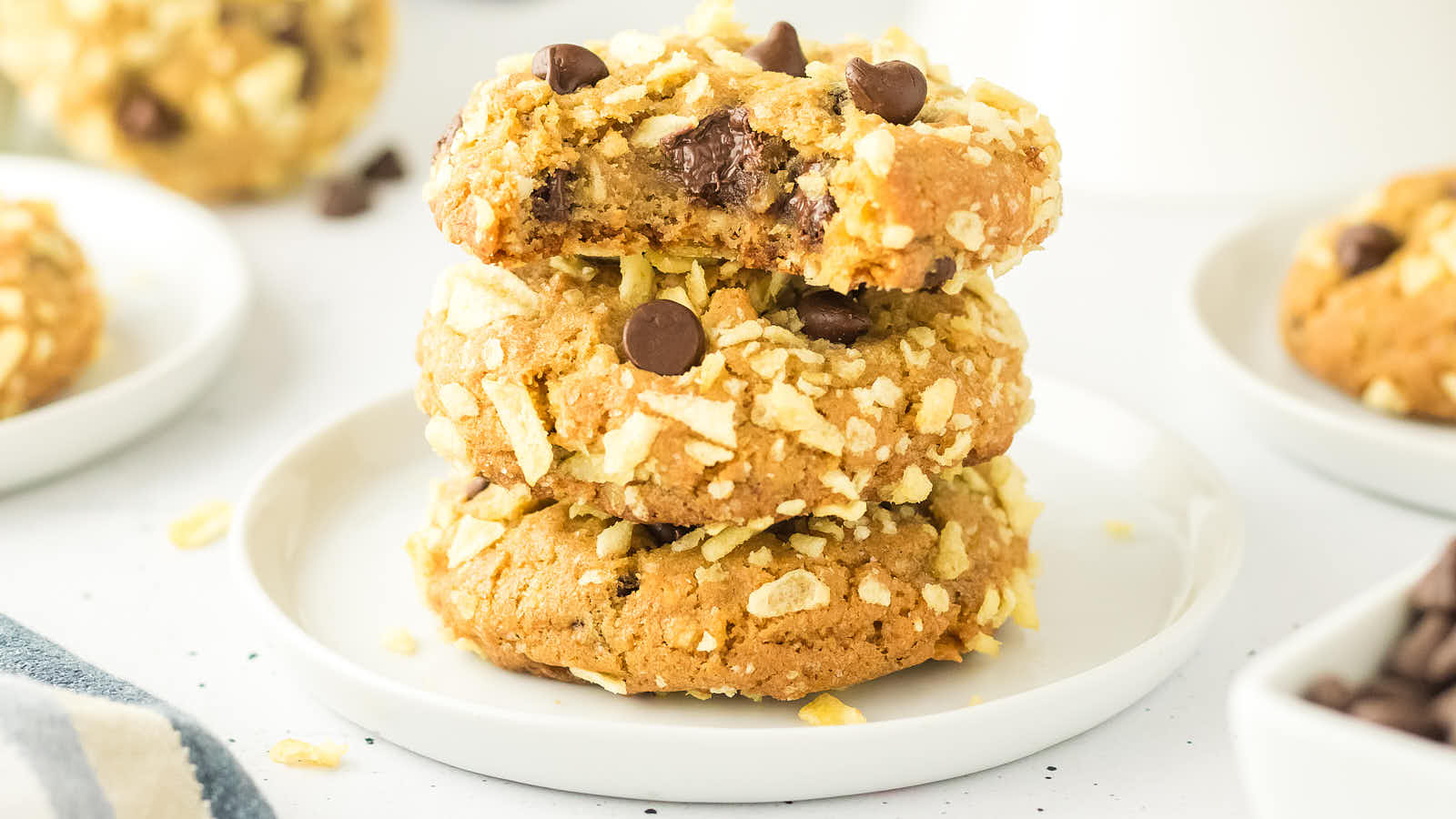
Potato Chip Cookies
Ingredients
- 2 cups all purpose flour
- 1 teaspoon baking soda
- ¼ teaspoon salt
- 1 ½ sticks unsalted butter
- ¾ cup brown sugar
- ½ cup granulated sugar
- 2 large eggs
- 1 tablespoon vanilla extract
- 1 7.5 ounce bag wavy potato chips crushed and divided, sea salt flavored
- 1 ½ cups chocolate chips divided
Instructions
- In a medium mixing bowl, whisk together the flour, baking soda, and salt. Set aside.
- In the bowl of a stand mixer fitted with the paddle attachment, beat the butter, brown and granulated sugar on medium-high speed until light and fluffy.
- Add the eggs and vanilla extract. Continue mixing the batter on medium speed until fully combined. Mix in half of the crushed potato chips on low speed. Reserving the remaining chips for later.
- Add the flour mixture and beat on low speed until no streaks of flour remain. Fold in 1¼ cups of the chocolate chips, reserving the remaining ¼ cup for topping. The batter has now turned into a dough and needs to be chilled for at least 1 hour.
- Preheat the oven to 350° Fahrenheit and line a baking sheet with parchment paper.
- Use a medium cookie scoop to portion the chilled dough, then roll each portion in the crushed potato chips.
- Place the dough balls on the baking sheet, leaving about 1½-2 inches between each cookie. Press 4–5 of the reserved chocolate chips into the top of each cookie.
- Bake for 13–15 minutes or until the edges are lightly golden. Cool on the baking sheet for 5 minutes, then transfer to a cooling rack to cool completely.
Equipment
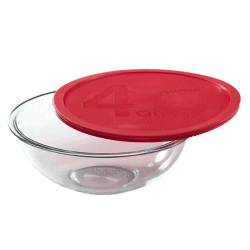
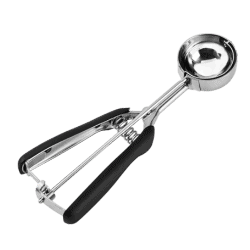
Notes
- Chill time should be at least one hour. Because chill times may vary they are not included in the total time.
- You DO NOT NEED a stand mixer. While I love using my stand mixer, you can also use any regular mixing bowls, and electric mixer with the whisk and dough hooks.
- You also DO NOT NEED a cookie scoop, but it makes life so much easier. But technically you can make your own 1-2″ dough balls.
- Potato bag sizes may vary. Make sure to have about 3½ ounces for the batter and some left for the dough. If you have leftover potato chips – enjoy them as a snack.
- Number of cookies may vary depending on the size of your cookie scoop or if you are even using a cookie scoop. There’s no right or wrong here. If the cookies are on the larger side make sure to adjust your baking time.
Nutritional Information
Nutritional Disclaimer
Cheerful Cook team members are not trained nutritionists or medical professionals. Calorie information and nutritional values are estimates. If you have nutritional concerns, we recommend using a nutritional calculator.
Maike Corbett is the founder and food blogger of Cheerful Cook, a popular recipe website featuring comfort food recipes from the US and Germany. She has been featured in numerous media outlets, including the AP Wire and MSN.

